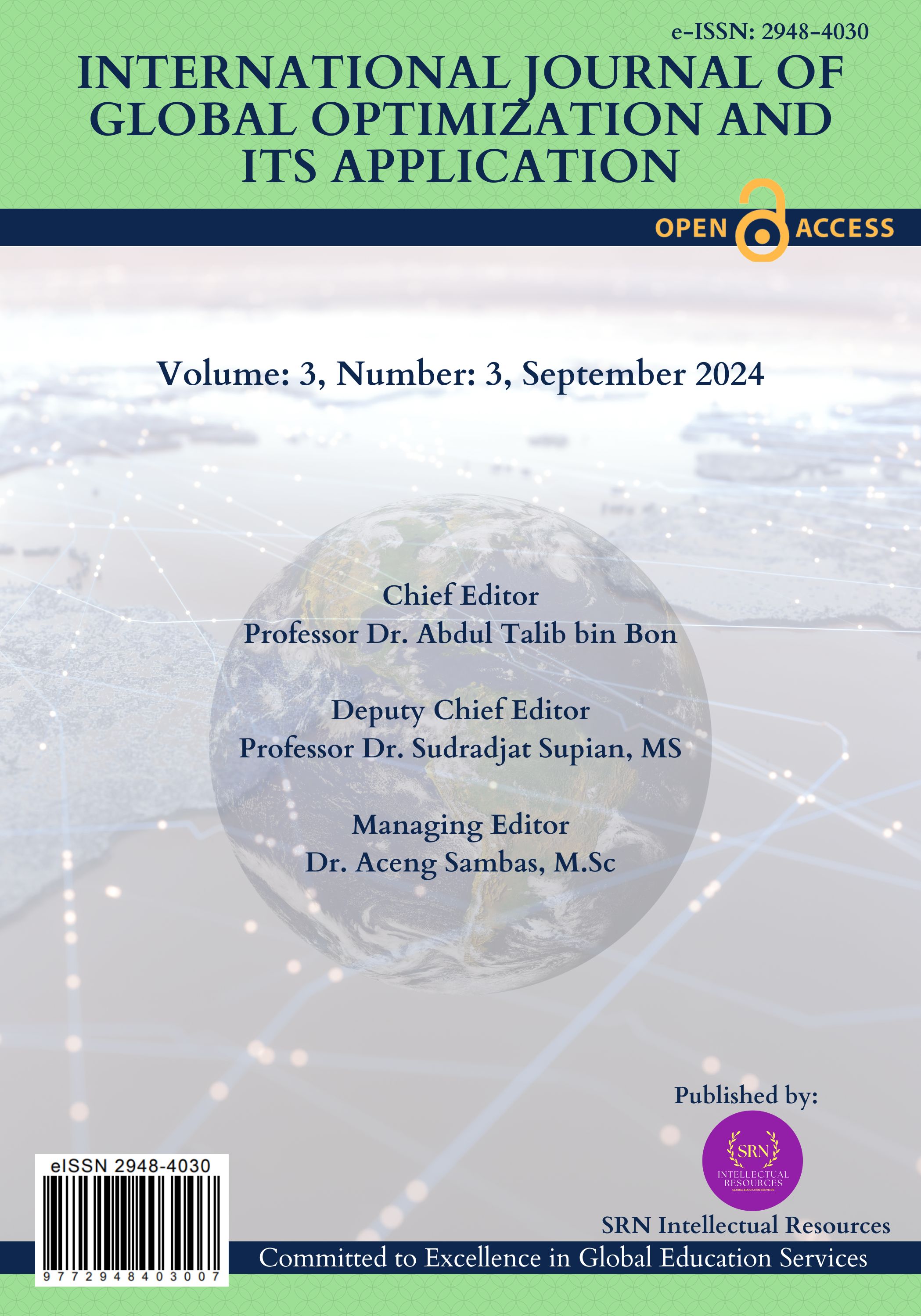Digital Transformation in Power Systems: Smart Grid Components, Control, and Challenges
https://doi.org/10.56225/ijgoia.v3i3.435
Keywords:
Smart Grid Technologies, Power System Modernization, Distributed Energy ResourcesAbstract
The transformation of traditional electric power systems is essential to meet increasing demands for reliability, efficiency, and sustainability. Conventional grids, built on electromechanical foundations, suffer from limited real-time monitoring, insufficient automation, and inefficiencies in balancing power generation and consumption. This study evaluates the potential of smart grid technologies to address these challenges by modernizing power infrastructure through reactive power compensation, network symmetry, smart substations, and advanced control systems. Using a qualitative-analytical approach, a comparative review of traditional and smart grid systems is conducted, supported by technical assessments of components such as SCADA/DMS platforms, FACTS devices, phase-shifting transformers, and Volt/VAR control systems. Results show that smart grid technologies significantly improve operational efficiency, phase balance, and system stability, while enabling real-time decision-making and integration of distributed energy resources. Smart substations provide enhanced fault detection, automated control, and voltage regulation compared to conventional systems. The study concludes that integrating intelligent digital systems into the grid architecture effectively addresses legacy grid shortcomings. These findings emphasize the urgency of accelerating smart grid deployment worldwide. Policy recommendations include prioritizing investments in smart grid infrastructure, developing supportive regulatory frameworks, and facilitating the transition to sustainable energy models. Future research should focus on quantitative impact evaluations, cybersecurity issues, and cost-benefit analyses of smart grid adoption in diverse regional settings.
Downloads
References
Al-Shetwi, A. Q., Hannan, M. A., Al-Masri, H. M. K., & Sujod, M. Z. (2024). Latest advancements in smart grid technologies and their transformative role in shaping the power systems of tomorrow: An overview. Progress in Energy.
Amin, S. M. (2011). Smart grid: Overview, issues and opportunities. advances and challenges in sensing, modeling, simulation, optimization and control. European Journal of Control, 17(5–6), 547–567.
Bedi, G., Venayagamoorthy, G. K., Singh, R., Brooks, R. R., & Wang, K.-C. (2018). Review of Internet of Things (IoT) in electric power and energy systems. IEEE Internet of Things Journal, 5(2), 847–870.
Ekanayake, J. B., Jenkins, N., Liyanage, K. M., Wu, J., & Yokoyama, A. (2012). Smart grid: technology and applications. John Wiley & Sons.
Enemosah, A., & Chukwunweike, J. (2022). Next-Generation SCADA Architectures for Enhanced Field Automation and Real-Time Remote Control in Oil and Gas Fields. Int J Comput Appl Technol Res, 11(12), 514–529.
Fang, X., Misra, S., Xue, G., & Yang, D. (2012). Smart Grid — The New and Improved Power Grid: A Survey. IEEE Communications Surveys & Tutorials, 14(4), 944–980. https://doi.org/10.1109/SURV.2011.101911.00087
Gungor, V. C., Sahin, D., Kocak, T., Ergut, S., Buccella, C., Cecati, C., & Hancke, G. P. (2011). Smart Grid Technologies: Communication Technologies and Standards. IEEE Transactions on Industrial Informatics, 7(4), 529–539. https://doi.org/10.1109/TII.2011.2166794
Ilic, M. D., Allen, H., Chapman, W., King, C. A., Lang, J. H., & Litvinov, E. (2005). Preventing future blackouts by means of enhanced electric power systems control: From complexity to order. Proceedings of the IEEE, 93(11), 1920–1941.
Khalid, M. (2024). Technology and Architecture of Smart Grids. In Handbook of Energy and Environment in the 21st Century (pp. 86–108). CRC Press.
Kumari, S., & Tyagi, A. K. (2024). Role of Emerging Technologies in Smart Grids and Power Systems. Digital Twin and Blockchain for Smart Cities, 429–457.
Lo, C.-H., & Ansari, N. (2011). The progressive smart grid system from both power and communications aspects. IEEE Communications Surveys & Tutorials, 14(3), 799–821.
Massoud Amin, S., & Wollenberg, B. F. (2005). Toward a smart grid: power delivery for the 21st century. IEEE Power and Energy Magazine, 3(5), 34–41. https://doi.org/10.1109/MPAE.2005.1507024
Nuruzzaman, M., & Rana, S. (2025). IoT-Enabled Condition Monitoring in Power Distribution Systems: A Review of Scada-Based Automation, Real-Time Data Analytics, and Cyber-Physical Security Challenges. Journal of Sustainable Development and Policy, 1(01), 25–43.
Pfenninger, S., Hawkes, A., & Keirstead, J. (2014). Energy systems modeling for twenty-first century energy challenges. Renewable and Sustainable Energy Reviews, 33, 74–86.
Power, I. E. E. E., & Society, E. (2011). The Flow of Energy in an Industrial Society. IEEE Smart Grid Vision for Communications.
Rehtanz, C., & Hassan, M. (2013). RNA and Cancer (J. Y. Wu (ed.); Vol. 158). Springer Berlin Heidelberg. https://doi.org/10.1007/978-3-642-31659-3
Reka, S. S., & Dragicevic, T. (2018). Future effectual role of energy delivery: A comprehensive review of Internet of Things and smart grid. Renewable and Sustainable Energy Reviews, 91, 90–108.
Sayed, K., & Gabbar, H. A. (2017). SCADA and smart energy grid control automation. In Smart energy grid engineering (pp. 481–514). Elsevier.
Siano, P. (2014). Demand response and smart grids—A survey. Renewable and Sustainable Energy Reviews, 30, 461–478. https://doi.org/10.1016/j.rser.2013.10.022
Tripathy, M., Joshi, H., & Panda, S. K. (2017). Energy payback time and life-cycle cost analysis of building integrated photovoltaic thermal system influenced by adverse effect of shadow. Applied Energy, 208, 376–389. https://doi.org/10.1016/j.apenergy.2017.10.025
Yi Wang, Qixin Chen, Chongqing Kang, Mingming Zhang, Ke Wang, & Yun Zhao. (2015). Load profiling and its application to demand response: A review. Tsinghua Science and Technology, 20(2), 117–129. https://doi.org/10.1109/TST.2015.7085625
Downloads
Published
How to Cite
Issue
Section
License
Copyright (c) 2024 Authors

This work is licensed under a Creative Commons Attribution 4.0 International License.


























